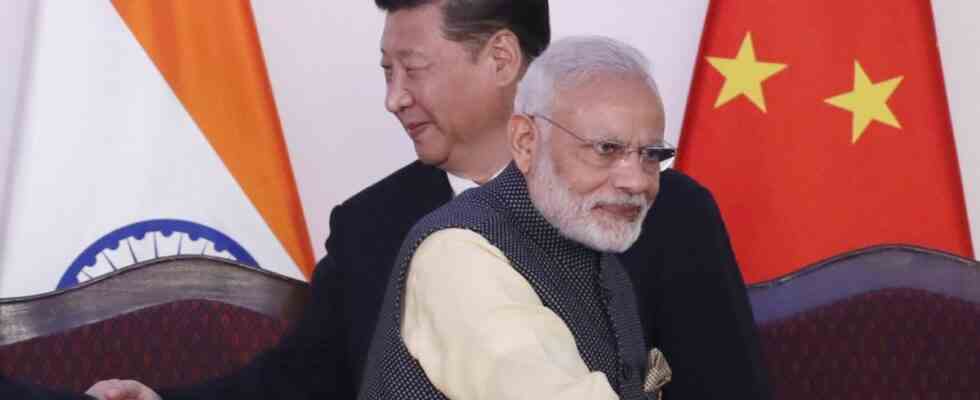The skirmishes between great powers China and India, fought high in the remoteness of the Himalayas, are one of the most overlooked conflicts in the world. Only a few days ago there were clashes again on the “Line of Actual Control” (LAC) between patrols from both countries, in the north-eastern Indian state of Arunachal Pradesh, above Assam – known in the West above all for the tea. “The risk of a conflict with China at the LAC is growing,” the wrote Hindustan Times. India has now sent more soldiers than ever to this border.
The Indian Army announced with some delay that Indian and Chinese soldiers suffered “minor injuries” after a clash on December 9. 20 Indian soldiers and a higher number on the Chinese side were affected, it was reported The Hindu. Details are unknown. MPs from the opposition left parliament in Delhi on Tuesday because the government refused to hold a debate on how to deal with the conflict. Not for the first time. Opposition politician Rahul Gandhi described the dispute as a “fight,” for which he was immediately reprimanded by Indian Foreign Minister Subrahmanyam Jaishankar: “We shouldn’t criticize our young soldiers.”
Efforts are being made in Delhi to prevent the conflict from escalating any further. Nevertheless, analysts consider new clashes to be likely. Especially in Arunachal Pradesh. There the Indian troops are thinner and the infrastructure is less developed than elsewhere. China considers the entire area part of Tibet and claims it as its own. Until the 1950s there was no common border with India. Then China occupied Tibet. Now the demarcation line runs thousands of kilometers in the Himalayas, in snow and ice.
Soldiers used to show each other placards. Later there were deaths
From the part of Kashmir administered by Pakistan, the LAC runs past the Galwan Valley, Nepal, Bhutan to Myanmar. In doing so, she repeatedly touches on Indian territory. Until a few years ago, soldiers from both sides patrolled mostly unarmed and left behind empty cigarette packs as a small greeting to the other side: We were there. When patrols did meet in the inhospitable area, they held up banners and urged each other to withdraw.
This went well until 2020, when Chinese troops began provoking their Indian counterparts in Ladakh. Fighting ensued, the soldiers attacking each other with clubs and stones. In the end, 20 Indian and four Chinese soldiers were dead. Several rounds of talks at commander level in the occupied territory followed. In the run-up to the meetings of the G20 and the “Shanghai Cooperation Organization”, diplomatic exchanges between Delhi and Beijing improved. There should even be a meeting between Xi Jinping and Narendra Modi.
It was peaceful at the border for a long time. Then in 2020 the first fatal collision occurred – and Delhi is now relocating more equipment and troops to the Himalayas.
(Photo: Mukhtar Khan/AP)
But then, four weeks ago, military units from both sides clashed again in the Galwan Valley. Since then, India has deployed six army divisions that normally guard the border with Pakistan. India and China not only have nuclear weapons, but numerically the largest armies in the world. According to the Stockholm International Peace Research Institute (SIPRI), Indian defense spending has risen from just under $50 billion to more than $76 billion last year within a decade – primarily to counter Pakistan and China.
On the other hand, more than two-thirds of India’s military budget is spent on salaries, pensions and services. Less than a third goes to military development and materiel. When the recruitment conditions were reformed this year, protests erupted across the country. The military has so far been considered one of the most attractive employers in the country.
Prime Minister Narendra Modi’s nationalist BJP government is in a bind. Improving the living conditions of the poor sections of the population was a central election promise and was partly implemented. But rising military spending is thinning the budget. And it’s a question of how much you want to increase spending. “In both the military and civilian sectors in India, everyone is looking at Ukraine,” said Angad Singh, an Indian defense analyst at the Financial Times. Because not only armament costs – grain and raw material prices are also rising. “They see the cost of a war and realize we can’t afford it.”

